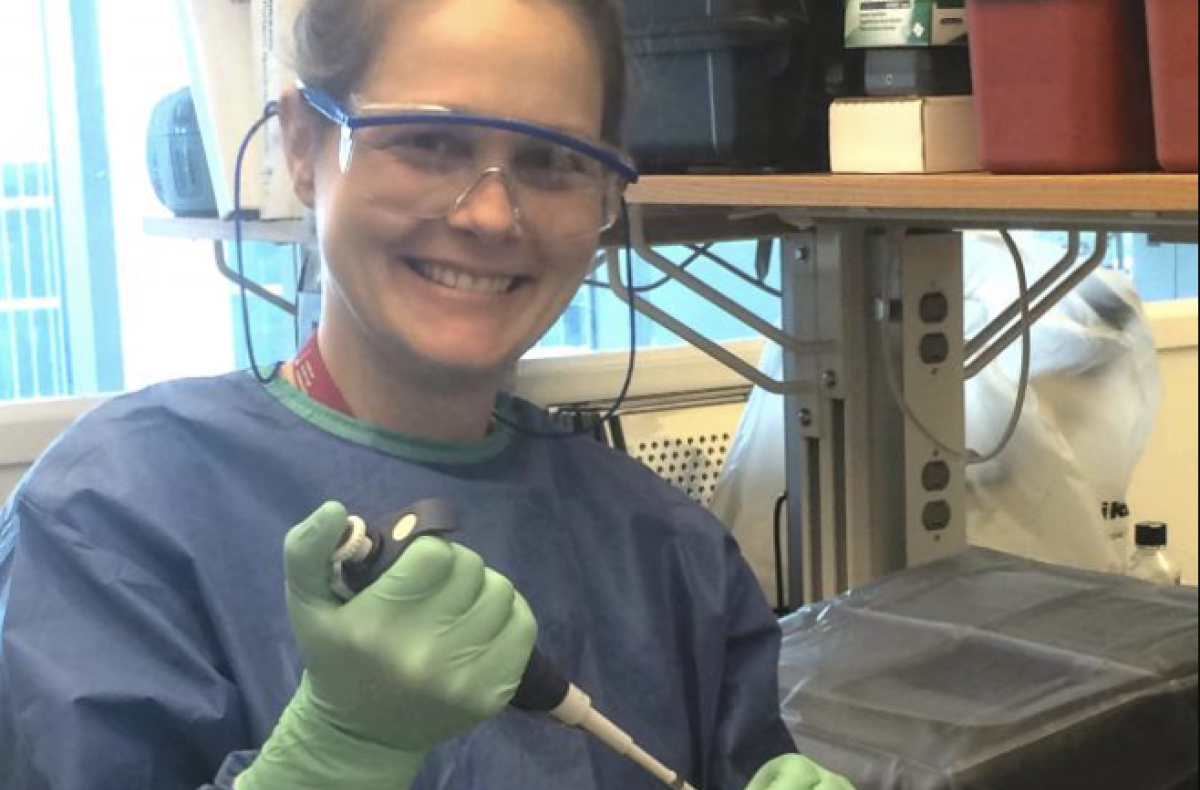Inspired by WHD - Mia Mattioli
As part of an ongoing series of WHD “alumni” profiles, we caught up with Mia Catharine Mattioli.
October 11, 2016

As part of an ongoing series of WHD “alumni” profiles, we caught up with Mia Catharine Mattioli, the Domestic Activity Lead for the Environmental Microbiology Lab at the Center for Disease Control and Prevention (CDC) in Atlanta, Georgia. Mattioli recently completed a postdoctoral fellowship at Emory University, where she worked on a collaborative project with the University of Georgia and the CDC to evaluate technologies and sampling strategies for monitoring foodborne pathogens and fecal contamination in irrigation water on South Georgia produce farms.
What kind of unique and / or powerful experiences did you have through WHD?
Through a collaboration with two WHD-affiliated professors, Ali Boehm and Jenna Davis, I was able to work on a project in Tanzania focused on improving child health through a water and hygiene behavioral intervention. The project included both in-country field work and laboratory analyses to evaluate the health risks posed by hand and drinking water contamination in a household setting. This project was an incredible introduction into the water, sanitation and hygiene (WASH) field. I continue to use many of the research strategies and lessons learned in my work today.
Tell us about your current work.
I work in the CDC’s Environmental Microbiology Laboratory of the Waterborne Disease Prevention Branch within the Division of Foodborne, Waterborne and Environmental Diseases and the National Center for Emerging and Zoonotic Infectious Diseases. I serve as the activity lead for domestic water, sanitation and hygiene laboratory projects. I focus on environmental health research areas such as irrigation water, wastewater, recreational water, soil, food, drinking water distribution systems and development of advanced molecular detection technologies. I also serve as an adjunct assistant professor in the Environmental Health Department of Emory’s Rollins School of Public Health.
How did your time with WHD prepare and / or inspire you for the work you are doing now and hope to do in the future?
The WHD program at Stanford was my first introduction to examining the sources, fate and transport of pathogens in the environment. Through the interdisciplinary nature of WHD, I was able to put my mechanistic examination of pathogens in the environment into the context of both health and behavior change for a more in-depth interpretation of my results. During my time with WHD, I became fascinated with how pathogens move through the environment and the different tools we use to measure or indicate their presence. From my experience with WHD, I am pursing a career at the CDC in environmental microbiology where I will continue to explore pathogens in the environment and the risks they pose to our health.
From your perspective, why does a program like WHD matter? What does it do uniquely well?
WHD matters because water and health research is extremely complex. Only through the collaboration of many different disciplines and research interests will we be able to tease out sustainable water solutions for the growing global population. WHD is unique because it fosters that collaboration by bringing together faculty and students interested in water and health research from several different departments and schools across Stanford’s campus. As a student, it was inspiring for me to see how other groups approached water related research questions and discovered ways to learn from one another’s techniques. I hope to carry this collaborative mindset into my career as an environmental health researcher.
Contact Information
Rob Jordan
Associate Editor, Environment and Sustainability, Woods Institute
rjordan@stanford.edu


